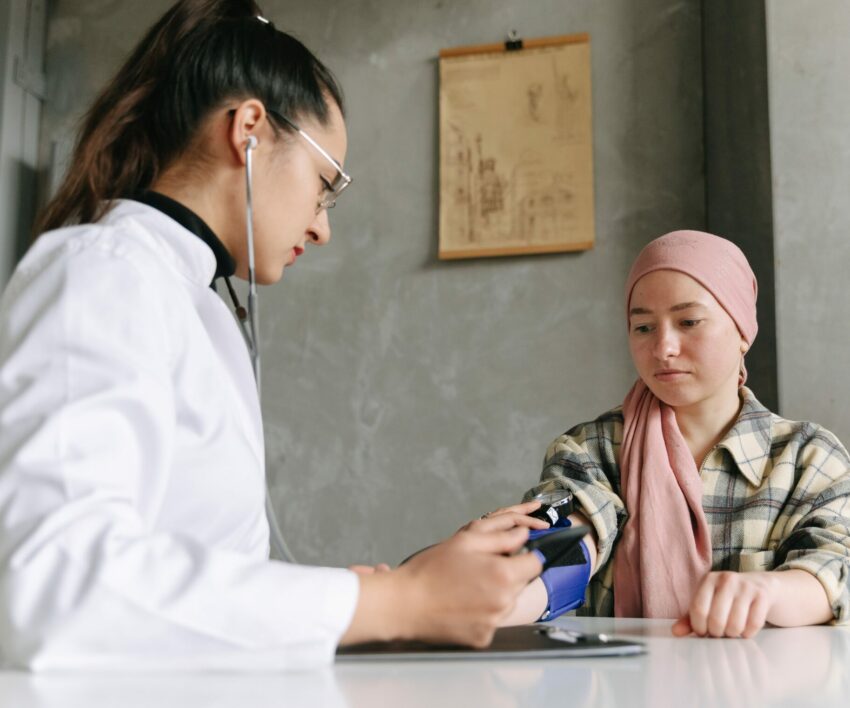
Most times, we associate cancer with a tumour that develops in a person’s body and ends up being declared cancerous. This is true for most types of cancer, but when it comes to cancer of the blood it is a different case.
The Cleveland Clinic defines blood cancer, known as leukaemia, as being characterized by the rapid growth of abnormal white blood cells in the bone marrow, causing most of the body’s blood. “Leukemia cells are usually immature (still developing) white blood cells. The term leukaemia comes from the Greek words for “white” (leukos) and “blood” (haima).”
How leukaemia develops
The above clinic further explains how this illness develops, stating that it starts in the bone marrow, where blood cells are made. These cells are said to undergo multiple stages before reaching mature forms, these are the red blood cells, white blood cells, and platelets.
“If you have leukaemia, one of the developing blood cells begins to multiply out of control. These abnormal cells, called leukaemia cells, begin to take over the space inside of your bone marrow. They crowd out the cells trying to develop into healthy red blood cells, white blood cells and platelets.”
Types of leukaemia
It is stated by WebMD that symptoms of this condition vary, depending on the type of leukaemia, therefore the publication differentiated these different kinds of this cancer as:
- Acute lymphocytic leukaemia
- Acute myelogenous leukaemia
- Chronic lymphocytic leukaemia
- Chronic myelogenous leukaemia
Symptoms
According to the Cancer Council, these are the common symptoms of leukaemia with some of them only being found in certain types of the disease:
- Tiredness and/or anaemia (pale complexion, weakness and breathlessness)
- Repeated infections (mouth sores, sore throat, fevers, sweats, coughing, frequent passing of urine with irritation, infected cuts and scratches, and boils)
- Increased bruising and bleeding
- Bone pain
- Swollen, tender gums
- Skin rashes
- Headaches
- Vision problems
- Vomiting
- Enlarged lymph glands
- Enlarged spleen that may cause pain or discomfort
- Chest pains.
Causes
The Leukemia Care publication clarifies that this condition is not contagious or inherited, but is more common in older individuals, with peak incidence in children. It is said to also be more common in males. “Being exposed to some chemicals and high levels of radiation may increase the chance of developing leukaemia. Some forms of leukaemia are seen more commonly in people who have other bone marrow disorders. The most common disorders which behave in this way are myelodysplastic syndrome (MDS) and myeloproliferative neoplasms (MPN).”
Treatment\Management
How you go about treating blood cancer is dependent on the type of leukaemia you have, the following suggestions are prescribed by Blood Care:
Active monitoring: This is said to be a treatment option for slow-developing blood cancers, where treatment is started only when needed, ensuring no added benefits from immediate treatment.
Chemotherapy: Chemotherapy uses drugs to kill cancer cells, available via drip, tablet, or injection. High doses can cause side effects, while lower doses are gentler and less invasive.
Other drug therapies: Also known as biological therapies or immunotherapy, target proteins or genetic changes in cancer cells, such as rituximab and TKIs, used alone or with chemotherapy.
Stem cell transplant: Blood stem cells, at their earliest stage, undergo a stem cell transplant, involving chemotherapy to kill abnormal cells and receiving new stem cells from the donor to produce healthy blood cells.
Also see: Tips to improve your immune system




